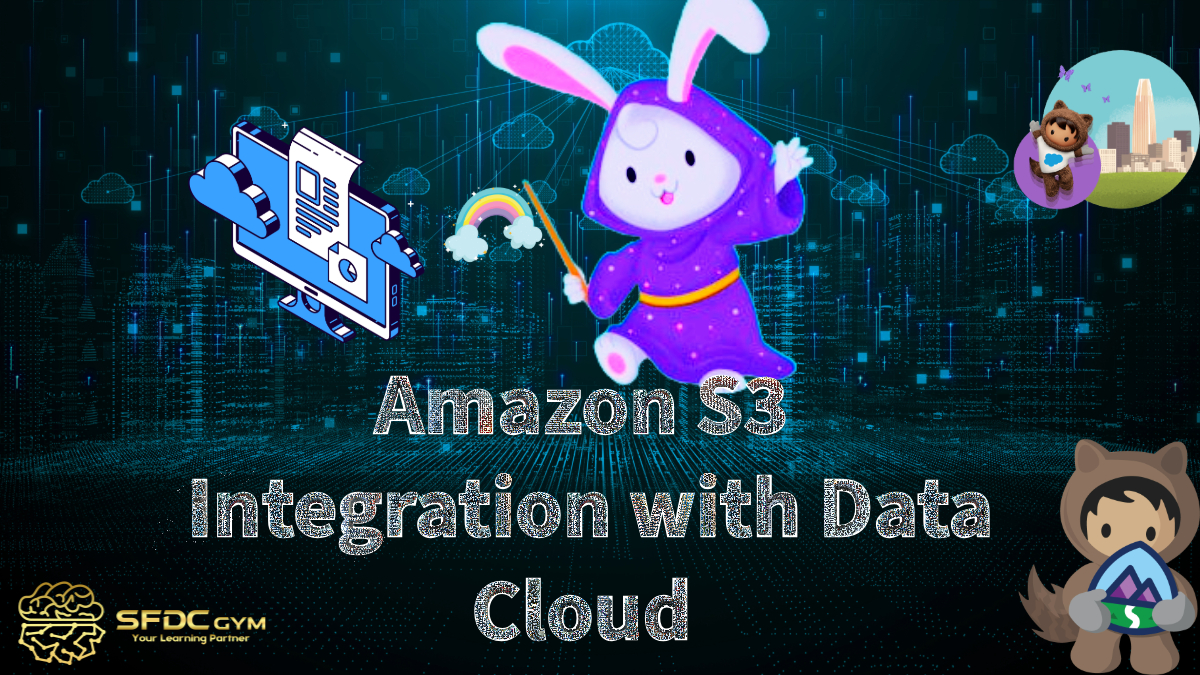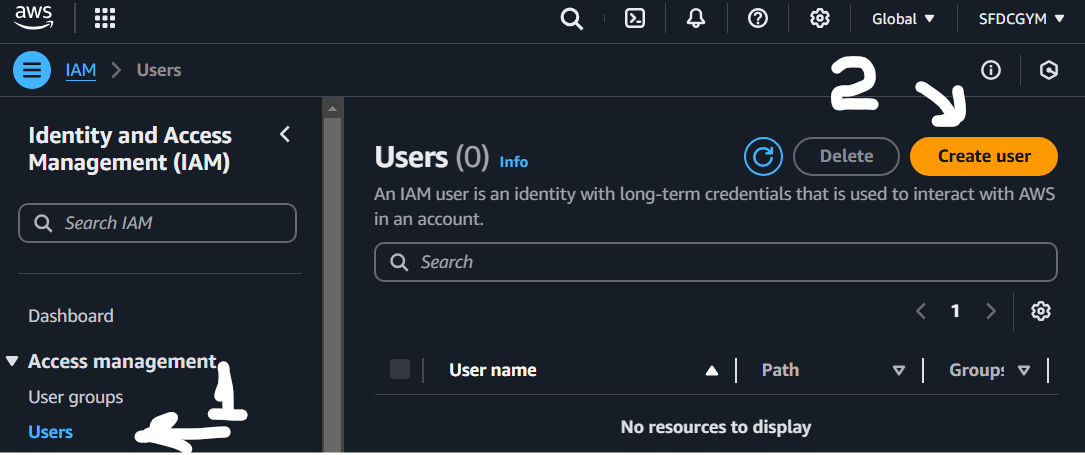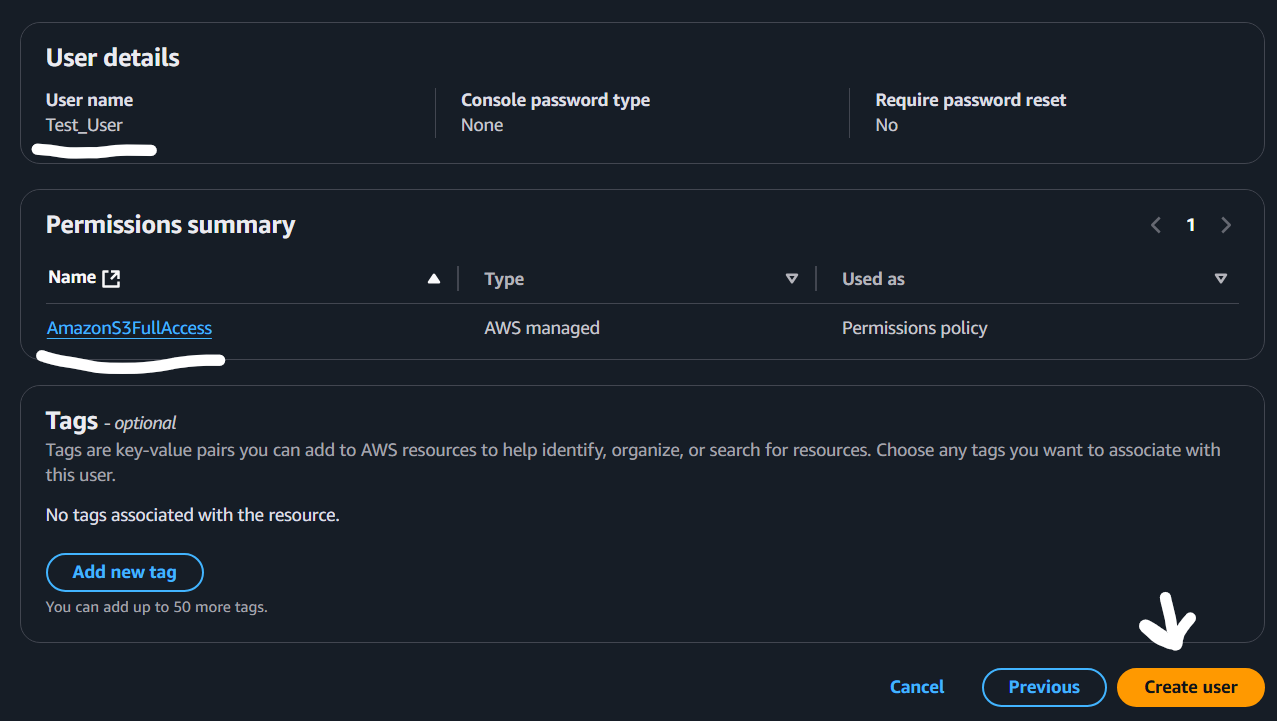AWS S3 Integration with Salesforce Data Cloud



AWS S3 Integration with Salesforce Data Cloud
Seamlessly connecting AWS S3 to Salesforce Data Cloud can help you unlock the potential of your data by enabling efficient sharing and synchronization across platforms. Whether you're a data analyst, Salesforce developer, Salesforce admin, AWS engineer, or software development professional, understanding this integration is crucial for leveraging customer insights and driving better decisions.
This step-by-step guide will walk you through setting up the integration, outlining the actions required in both AWS and Salesforce Data Cloud. By the end, you'll have a complete understanding of how to make your systems work harmoniously together.
Why Integrate AWS S3 with Salesforce Data Cloud?
AWS S3 is a powerful and scalable storage solution, while Salesforce Data Cloud transforms customer data into actionable insights through real-time analytics. Integrating the two allows you to:
- Store and retrieve large volumes of data securely.
- Sync customer data across platforms for unified customer profiles.
- Leverage real-time insights to make data-driven decisions.
Now, let's look at the steps needed to put this integration in motion.
Action Needed in AWS
To begin the integration process, you'll first need to configure your AWS S3 account and prepare it to securely share data with Salesforce Data Cloud.
1. Create an AWS Account
If you don’t already have an AWS account, follow these steps:
- Go to the AWS homepage .
- Click on "Create an AWS Account."
- Enter your email address, create a password, and provide a name for your account.
- Follow the prompts to complete the signup process, including verifying your email and entering payment details.
After setting up your account, you'll gain access to the AWS Management Console.
2. Create a User in AWS
To allow Data Cloud to interact with your S3 bucket, create a dedicated user:
- Go to “IAM” (Identity and Access Management) in the AWS Management Console.
- Click on “Users” and then “Add Users.”
- Provide a username (e.g., “DataCloudUser”).
- Under "Permissions options",” select "Attach policies directly" .
- Select AmazonS3FullAccess Policy
- Click “Next.”
- Click "Create User.”


3. Assign the AmazonS3FullAccess Policy to the User (Optional)
To enable the user to interact with your S3 bucket, assign the appropriate access policy:
- On the permissions page, click “Attach Policies Directly.”
- Search for and select "AmazonS3FullAccess."
- Click “Next” and proceed to create the user.
4. Generate access key and secret access
To connect Data Cloud with S3, access key and secret access are required. Steps are:
- Go to the user created above and click on "Security credentials" tab
- Click "Create access key" button
- Select "Third-party service"
- Check the Confirmation checkbox and click "Next"
- Click "Create access key" button
- Once generated, download or copy the access key and secret access key (you'll need these later).
5. Create an S3 Bucket
Now, set up a bucket where your customer data will be stored:
- Go to “S3” in the AWS Management Console.
- Click “Create Bucket.”
- Give your bucket a unique name (e.g., “customer-data-bucket”) and select your region.
- Configure permissions and keep them private (recommended for sensitive data).
- Click “Create Bucket.”

6. Upload the Customer Data CSV File
Finally, upload your customer data to the bucket:
- Open your bucket in S3.
- Click “Upload,” then drag and drop your CSV file or browse your computer for the file.
- Click “Next,” configure permissions as needed, and finalize the upload.
Your AWS setup is now complete. Next, we'll connect this bucket to Salesforce Data Cloud.
Action Needed in Salesforce Data Cloud
1. Go to Setup and Search for "Other Connectors"
Navigate to the Salesforce Setup page in your organization, then use the Quick Find bar to search for "Other Connectors."
2. Add a New AWS S3 Connection
To set up the connection:
- Click on “New” to create a new connector.
- From the dropdown menu, select “AWS S3.”
- Provide a name for the connection (e.g., "AWS-S3-Integration").
- Enter the Access Key and Secret Access Key you generated in the earlier AWS setup.
- Enter the name of the bucket (e.g., “customer-data-bucket”).
- Click "Test Connection" to ensure everything is set up correctly.

Once the connection is successful, don’t forget to click "Save" to secure the configuration.
3. Go to Data Cloud App and Select Data Streams
Now, switch to the Data Cloud App in Salesforce:
- Navigate to the Data Cloud App and locate “Data Streams” from the menu.
- Click “New Data Stream” and select “Amazon S3.”
4. Configure the Data Stream
Specify the details:
- Click “Next” and specify the name of the CSV file you uploaded to the S3 bucket (e.g., “Customer Data”).
- Select “Profile” as the category of the data stream.
- Assign a unique identifier (e.g., customer ID) to ensure proper record matching.
Define the refresh type for updates. Choose between:
- Upsert: With the Upsert refresh type, new records are inserted into the data stream, and existing records are updated based on the unique identifier you specified earlier. This method allows for efficient and incremental updates, ensuring that your data is always in sync.
- Full Refresh: On the other hand, the Full Refresh refresh type replaces all existing data in the data stream with the latest data from your S3 bucket. This method is useful for scenarios where you want to completely refresh your data or when you need to start from scratch.
5. Deploy the Data Stream
After configuring the data stream, click “Deploy” to set it live. Salesforce Data Cloud will now begin pulling data from your S3 bucket.
Congratulations! Your Salesforce Data Cloud is now fully integrated with AWS S3, and your systems can share data seamlessly.
Unleashing the Power of Integration
By connecting AWS S3 with Salesforce Data Cloud, you're equipping your organization with a powerful toolset for managing and analyzing data. Whether you're creating a 360-degree view of your customers or driving smarter business decisions, this integration is a game-changer.
Getting started might feel overwhelming, but taking it step by step ensures a smooth process. Follow this guide closely, and you'll have your integration up and running with minimal effort.
Next Steps
If you're excited about streamlining your data flow and getting real-time insights, why stop here? Try out this integration with other AWS services or explore advanced analytics in Salesforce Data Cloud to uncover even deeper patterns.
For more Salesforce development tips or integration support, stay tuned to our blog—we’re here to help you succeed.


